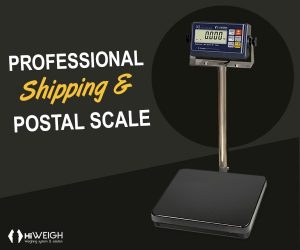

 The accuracy of a weighing platform scale helps to develop trust among your clients and customers thereby helping your business a great deal. Hence, it is important the components of weighing scales are chosen wisely. Besides, steps are needed to be taken to control the environmental and other factors that can impact the functioning of the scales. Let’s find out the factors that can impact the accuracy of your weighing scale. The blog deals with the way the scales should be selected, installed and operated with an aim to address the factors.
The accuracy of a weighing platform scale helps to develop trust among your clients and customers thereby helping your business a great deal. Hence, it is important the components of weighing scales are chosen wisely. Besides, steps are needed to be taken to control the environmental and other factors that can impact the functioning of the scales. Let’s find out the factors that can impact the accuracy of your weighing scale. The blog deals with the way the scales should be selected, installed and operated with an aim to address the factors.
Modus Operandi of a Weighing System
A weighing system consists of components such as load cells, weighing platform, junction box, and a weight controller. The load cells generate electrical signals that are commensurate with the applied load wherein the signals are transmitted by a cable to the junction box. The signals are then added in the junction box and carried to a weight controller to be converted into weight reading. The accuracy of such a weight reading can be impacted by the quality of the components and the surrounding operating environment.
The factors present in the operating environment that can impact the performance of a weighing solution are as follows.
- Accuracy of a load cell
- Load factors
- Environmental factors
- Quality of signal transmission
- Quality of components
Let’s discuss the same in some detail.
Accuracy of Load Cell: To begin with, a load cell is a transducer that converts the mechanical force applied by a weight into an electrical signal. The bend of the load cell is measured by the strain gauges. The strain gauges on their part generate a commensurate electrical signal. The specifications that determine the accuracy of a load cell include nonlinearity, hysteresis, nonrepeatability, creep, temperature effect on output, and the temperature effect on zero.
Load Factors: It is important to place the applied load on the weighing platform in such a way that its weight gets evenly distributed across all the load cells. If the load is applied improperly (also called a twisting load,) the strain gauges will transmit signals that are proportional to the twisting rather than the actual weight. To ensure the entire load is supported by the load cells, the bumpers or check rods should not come in the way. Moreover, each load cell should be placed on the same level for equal sharing.
Environmental Factors: The presence of factors such as wind, shock, vibration, temperature and pressure differential can lead to errors. The weighing scale should be installed in such a way that these factors are minimised or eliminated. Moreover, proper instrumentation should be chosen with algorithms that nullify the effect of vibration and other factors.
Quality of Signal Transmission: Care should be taken to eliminate interferences from radio frequency (RFI), electromechanical components (EMI) moisture and temperature. The sources can range from lightning, two way radios, power lines, and solenoids. It is advisable to isolate the load cell signal cable from other cables.
Quality of Components: The quality of components in the weight controller should be able to differentiate and eliminate the unwanted signals generated from vibration, RFI and EMI. So, choose a weight controller that strengthens the load signals and eliminate the unwanted ones.
Conclusion
With the mitigation of the above mentioned factors, the accuracy of a weighing platform scale will increase. And an improvement in accuracy will have a positive impact on the overall business.
